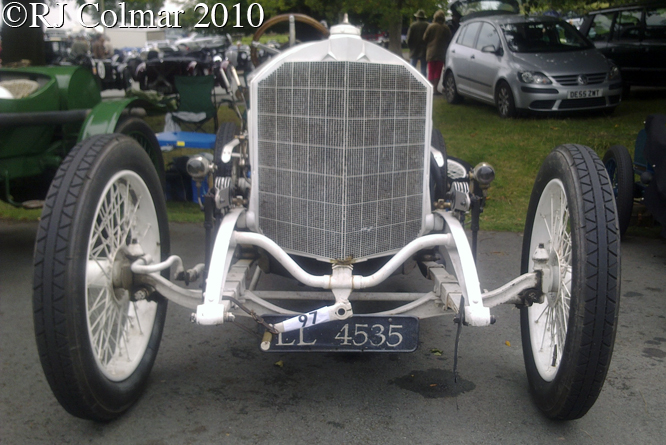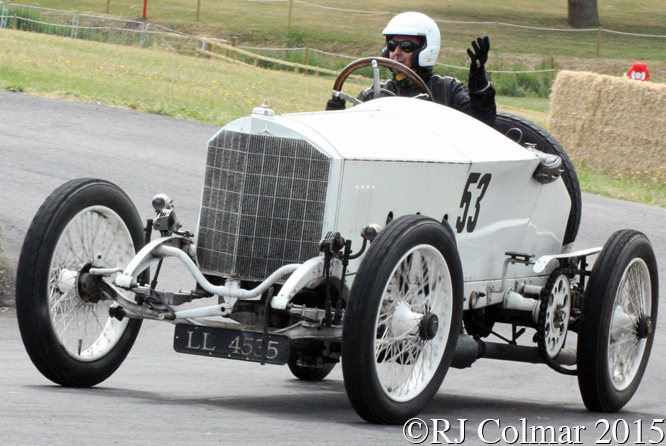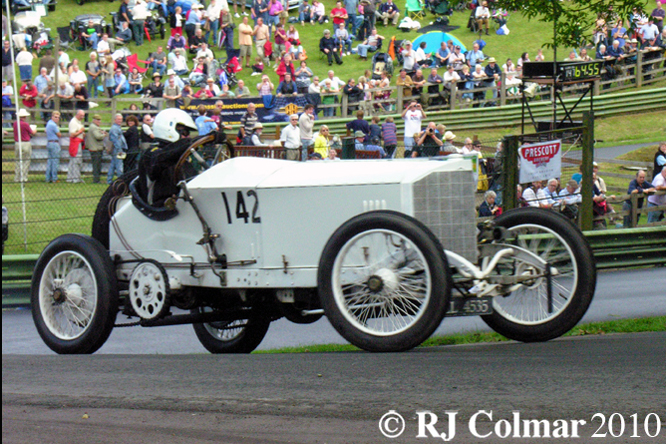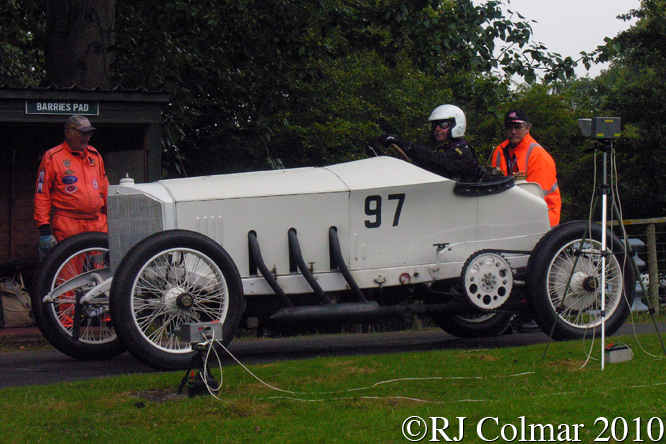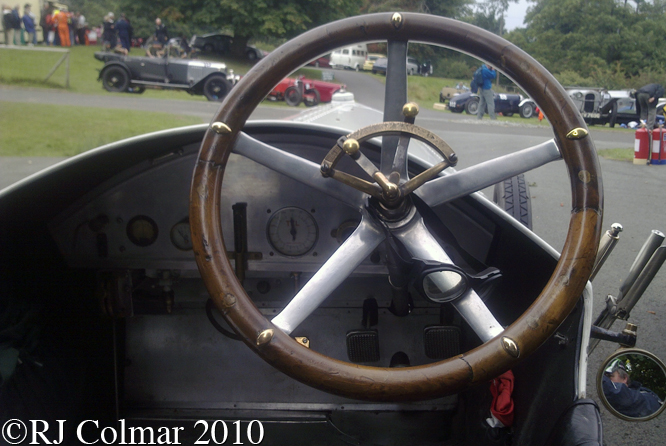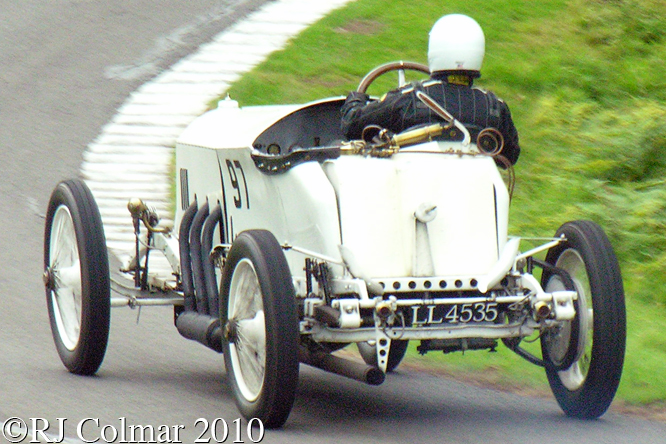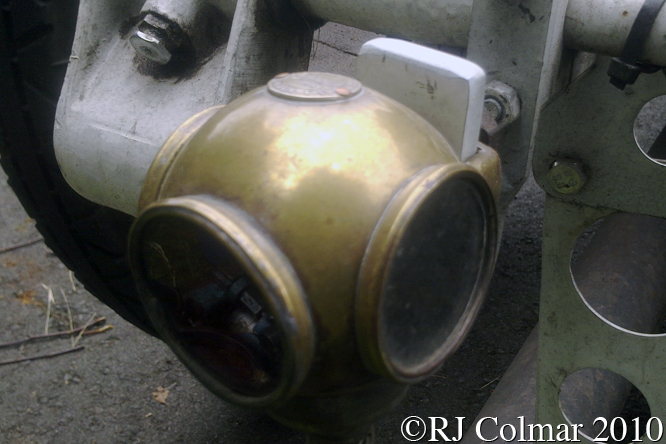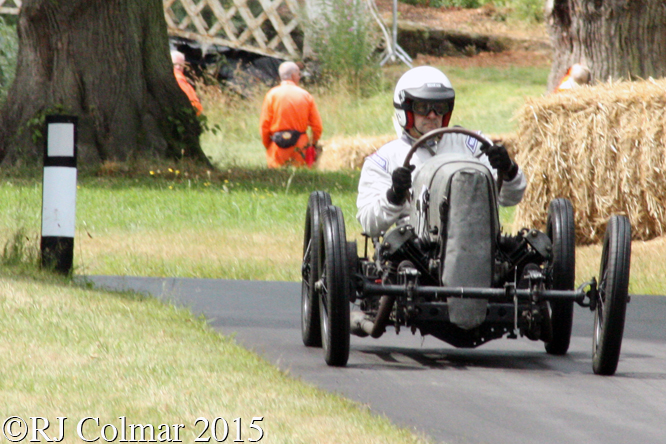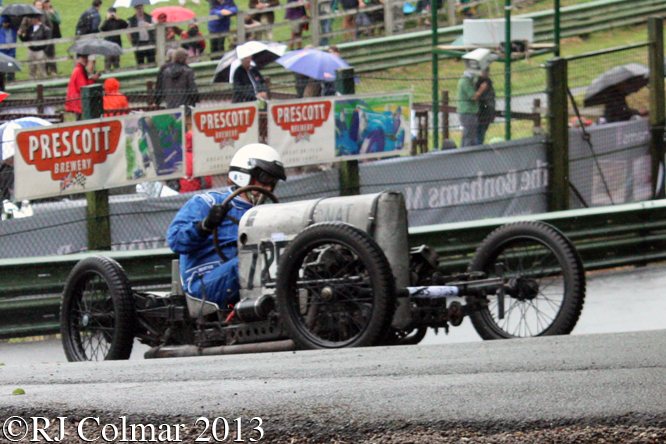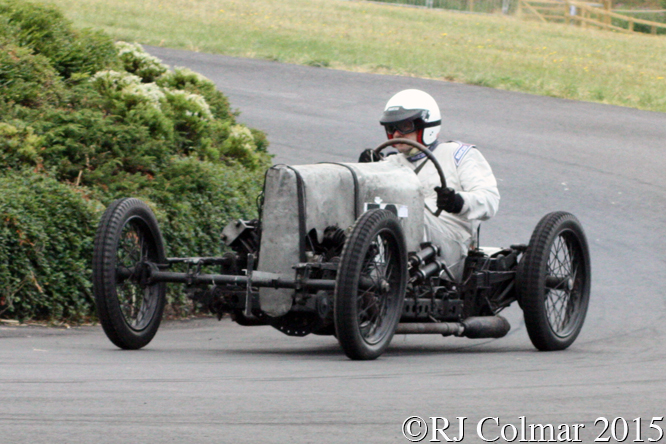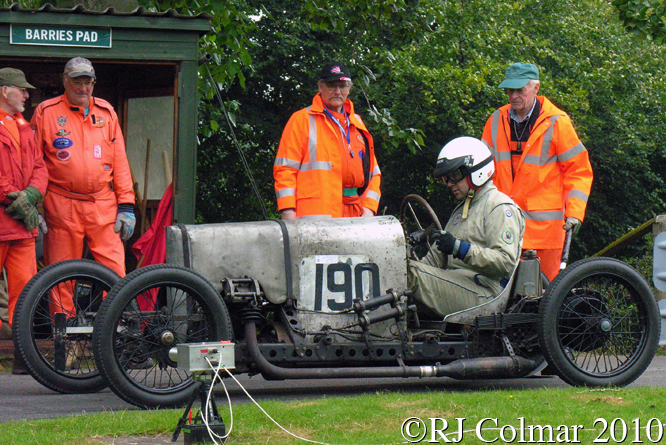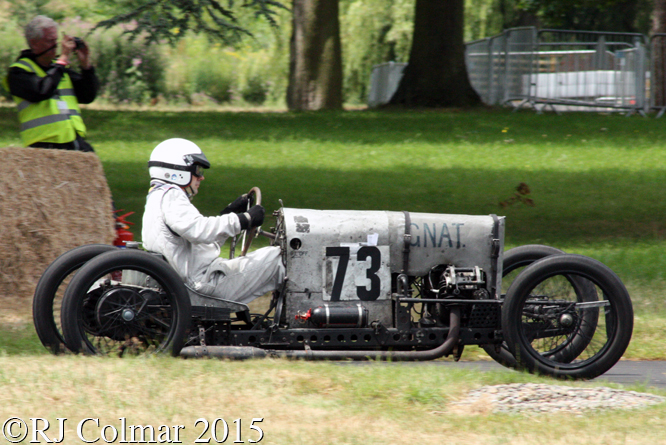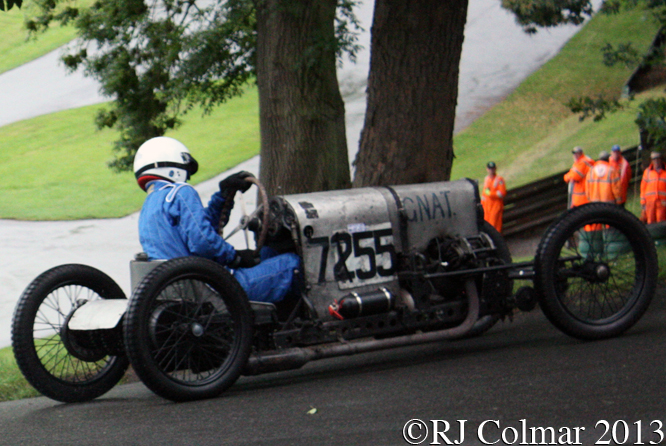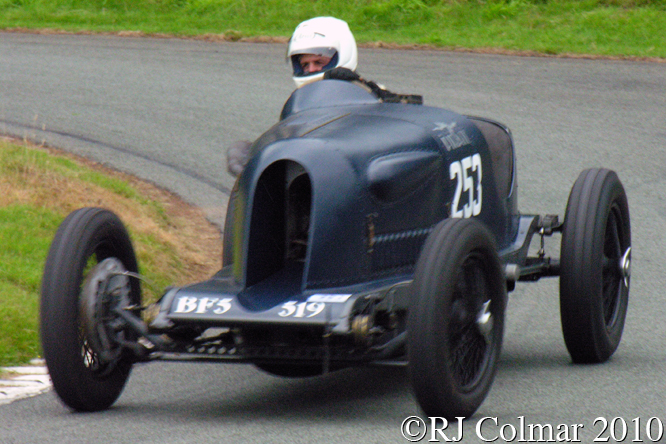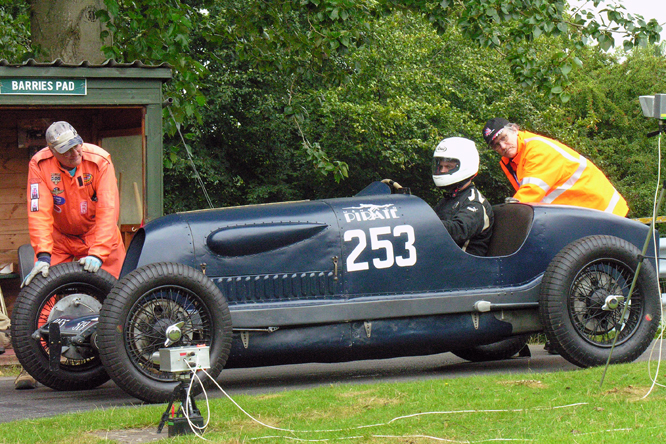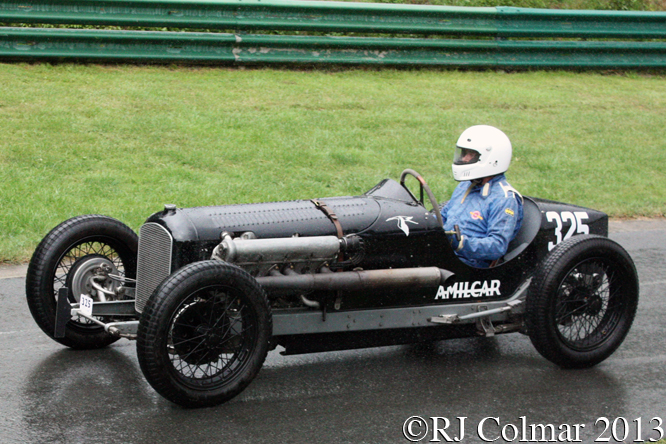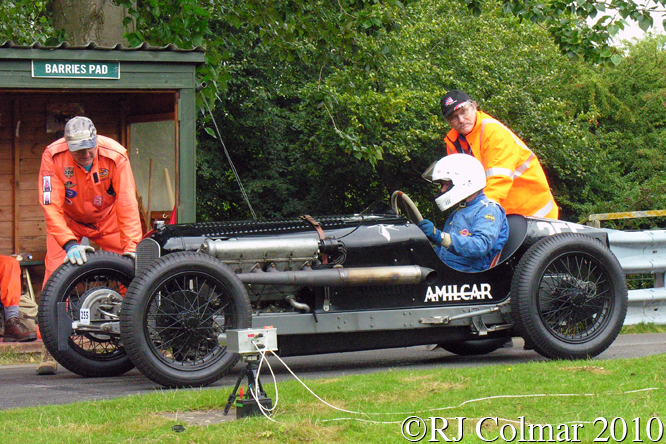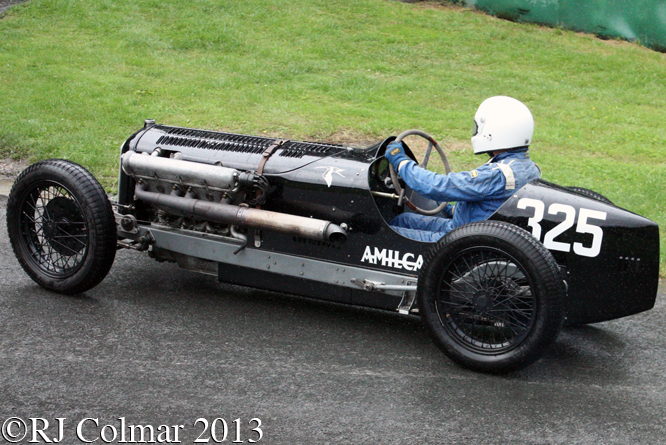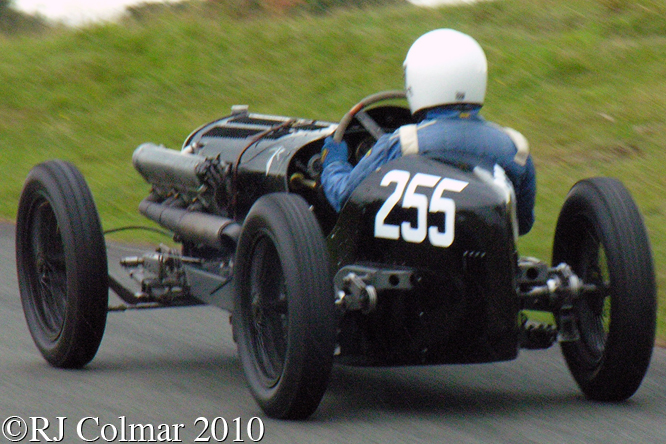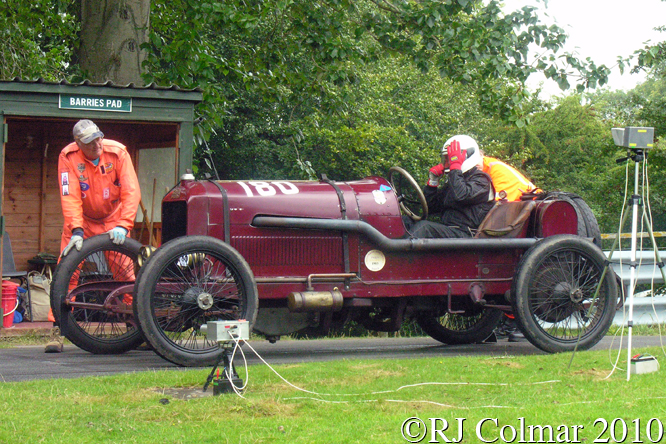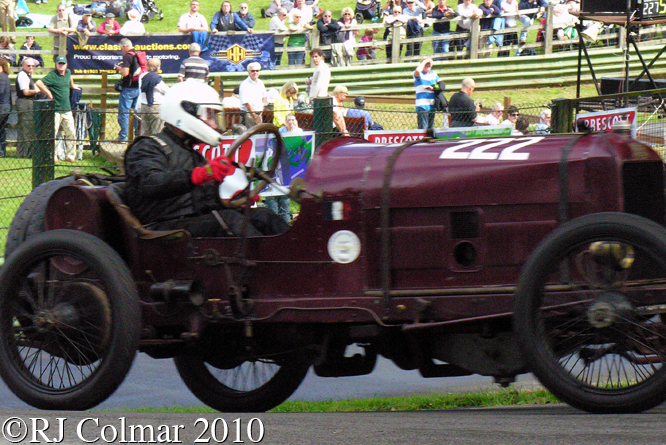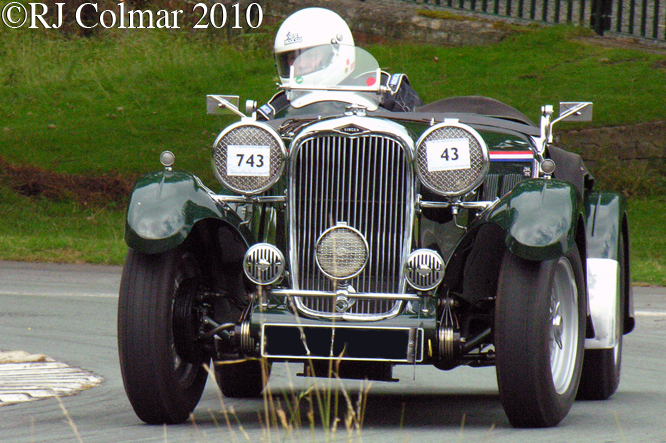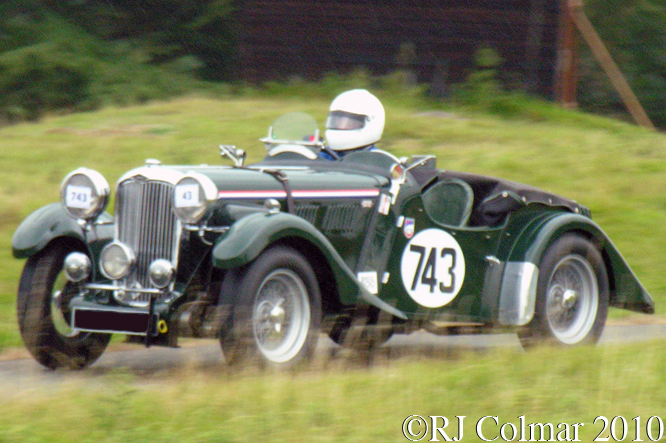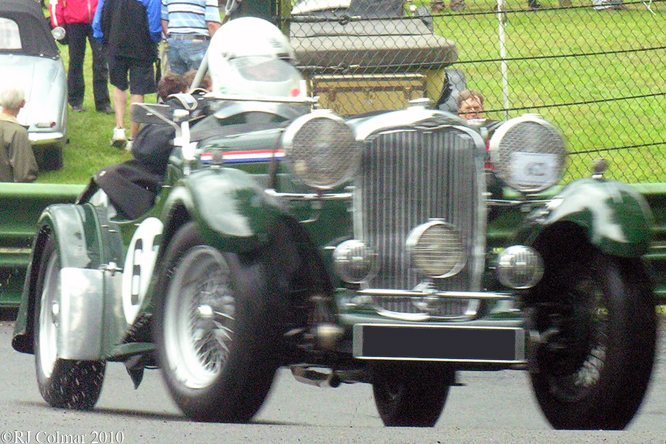Jack Moor’s original Wasp was a motorcycle combination with a yellow and black stripped petrol tank and cigar shaped sidecar.
In 1923 he bought a 2 seat GN Vitesse which fellow comeptitor Basil Davenport advised be converted to a single seater, while carrying out the conversion Jack shortened the chassis by a foot.
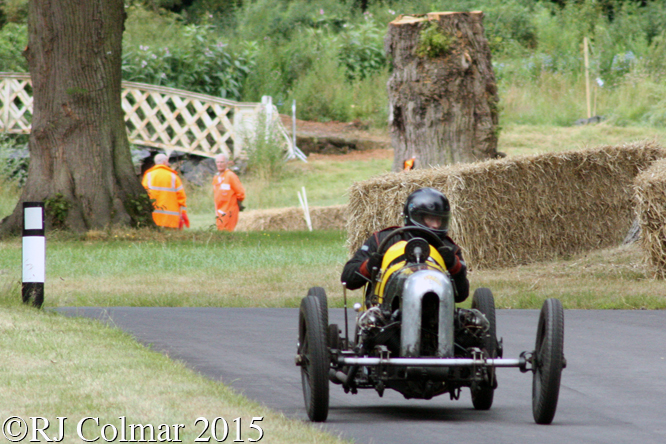
Later, to avoid perpetually finishing second to Basil in the 1.5 litre / 91 cui class, Jack enlarged his engine to 1510 cc / 92 cui so that he could compete in the up 122 cui class, which was not so keenly contested.
In 1931 the Vitesse based Wasp was wrecked against a telegraph pole after coming adrift of the towbar on the to Shelsley Walsh and Jack built a new vehicle based on a GN Akela.
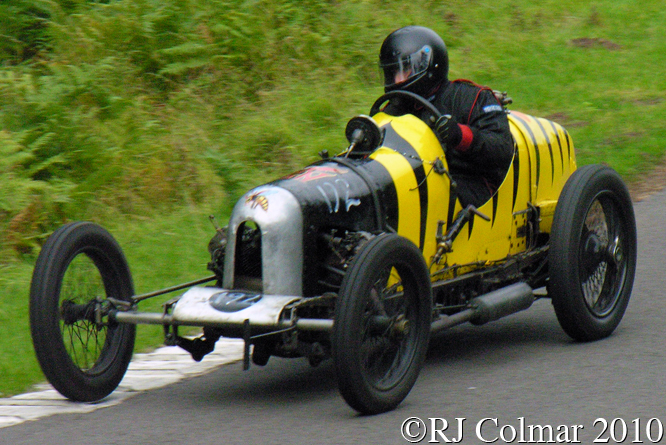
After winning the 1.1 litre / 67 cui class at Shelsley Jack replaced the 4 valve cylinder heads with a pair of Norton motorcycle cylinder heads which involved building a new crankcase using pattern borrowed from Basil.
With the Norton heads fitted Jack set a new record at the Wetherby Speed Trials which will remain in perpetuity since the venue is now defunct.
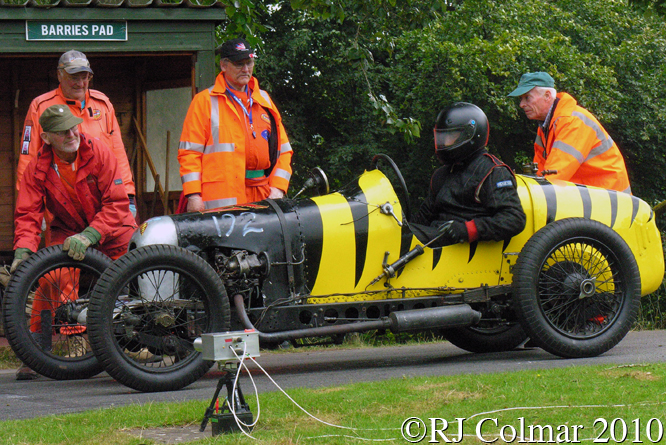
After the 1939 – 45 hostilities Jack reassembled Wasp in just 33 days so that he could compete at Shelsley in 1946, but Jacks event ended with an impressive fire.
He rebuilt Wasp yet again with a box section chassis Morgan independent front suspension and Rudge motorcycle wheels.
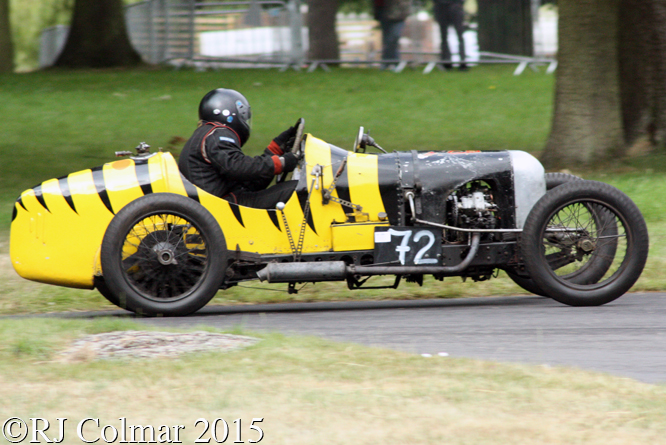
In August 1948 the engine blew up after a drive chain broke but once again the car, seen as the fore runner of G.N.A.T. which I looked at last week and Spider which I shall be looking at next week, was repaired.
Winston Teague is the current custodian of Wasp, seen in these photographs with him at the wheel at Chateau Impney and Loton Park, and he drives it no less enthusiastically than did Jack Moor, setting a record that still stands at Prescott in 2011.
My thanks to Tim Murray for lending me his copy of the 1971 edition of Special by John Bolster.
Thanks for joining me on this “Wetherby Record In Perpetuity” edition of “Gettin’ a li’l psycho on tyres” I hope you will join me again tomorrow, when I’ll be looking at another ERA. Don’t forget to come back now !


